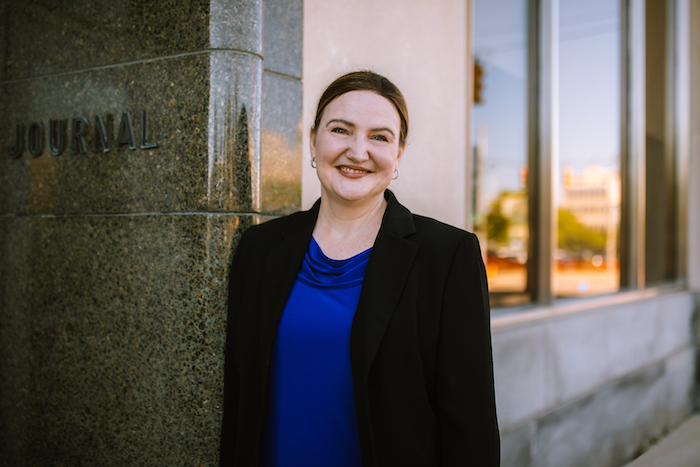Warning: This story talks about suicide. If you or someone you know needs help, please call, text or chat the Suicide and Crisis Lifeline at 988. You matter. You are important.
Michigan State University is one of the top public research universities in the world and a member of the prestigious Association of American Universities, widely regarded as among the top research-intensive institutions in North America. The following story highlights one of the many examples of MSU’s research excellence and innovation.

According to Jennifer Johnson, C.S. Mott Endowed Professor of Public Health in MSU’s College of Human Medicine in Flint and Chief Translation Officer with the MSU Office of Health Sciences, suicide can be avoided with proper behavioral intervention. The key, of course, is to connect the right people with the right resources at the right time.
Established by Johnson at MSU, Brian Ahmedani at Henry Ford Health and Lauren Weistock at Brown University with a $15.5 million grant from the National Institute of Mental Health, the National Center for Health and Justice Integration for Suicide Prevention, or NCHATS, is already working to find answers to this long-time nationwide issue.
Which community members are the focus of this research?
One large group of people who consider and attempt suicide are those who have interacted with the criminal-legal system. For example, a significant percentage of police calls are related to mental health, substance use and partner violence. Our research shows that 21% of adults who die by suicide in the U.S. have spent at least one night in jail in the past year, making this population an important focus for suicide prevention.
To get some perspective, how many people interact with the criminal-legal system in the U.S. each year?
More than you might expect. This year alone, there will be:
- 240 million 911 calls
- 53 million police contacts
- More than 7 million people will be arrested and detained in jail for at least one night
- More than 1 million people will receive a jail sentence
- 6 million will serve probation in the community
It’s important to understand that jail is different than prison. Jails are local and typically run by counties or cities. More than 80% of people in jail are not convicted and half will be released in less than a week. Prisons are operated at the state or federal level and hold people who are convicted and sentenced to more than a year.
How can we tell who is at risk and when their risk is highest?
Our research shows that individuals are often suicidal before being arrested. Detention often happens when people are in crisis. In fact, some individuals go to jail because of a suicide attempt like an attempted overdose, reckless driving or picking a fight and hoping to be killed. Once released, the risk of suicide in the following year is even higher than the risk of suicide in jail.
How is NCHATS working to match vulnerable people with suicide prevention services?
Because of high volume, short stays, the unpredictable length of stays and limited health staffing, jails have difficulty connecting people to community services. They are not equipped for this. But we are finding answers.
One solution is more community mental health funding at the state and county levels to avoid criminal-legal involvement for situations like homelessness or public nuisances. Another answer is to find more scalable ways to connect people to community mental health care after a criminal-legal encounter.
The NCHATS team has identified high levels of risk in this group and effective interventions. We also have discovered that advances in technology now give us the ability to scan publicly available data for matches to a health system. This means that we can gather publicly available arrest and release information and then alert local health systems so they know to reach out and check on their patients who may be in crisis. We also provide health systems with training in best practices for suicide prevention.
This approach is currently working in Ohio, and we’re excited to make it available nationally. In the end, it’s as simple as alerting people to reach out a hand and be another point of contact to folks who may be experiencing a turbulent time in their lives. It’s a genius, scalable solution.
More information about this research is available.